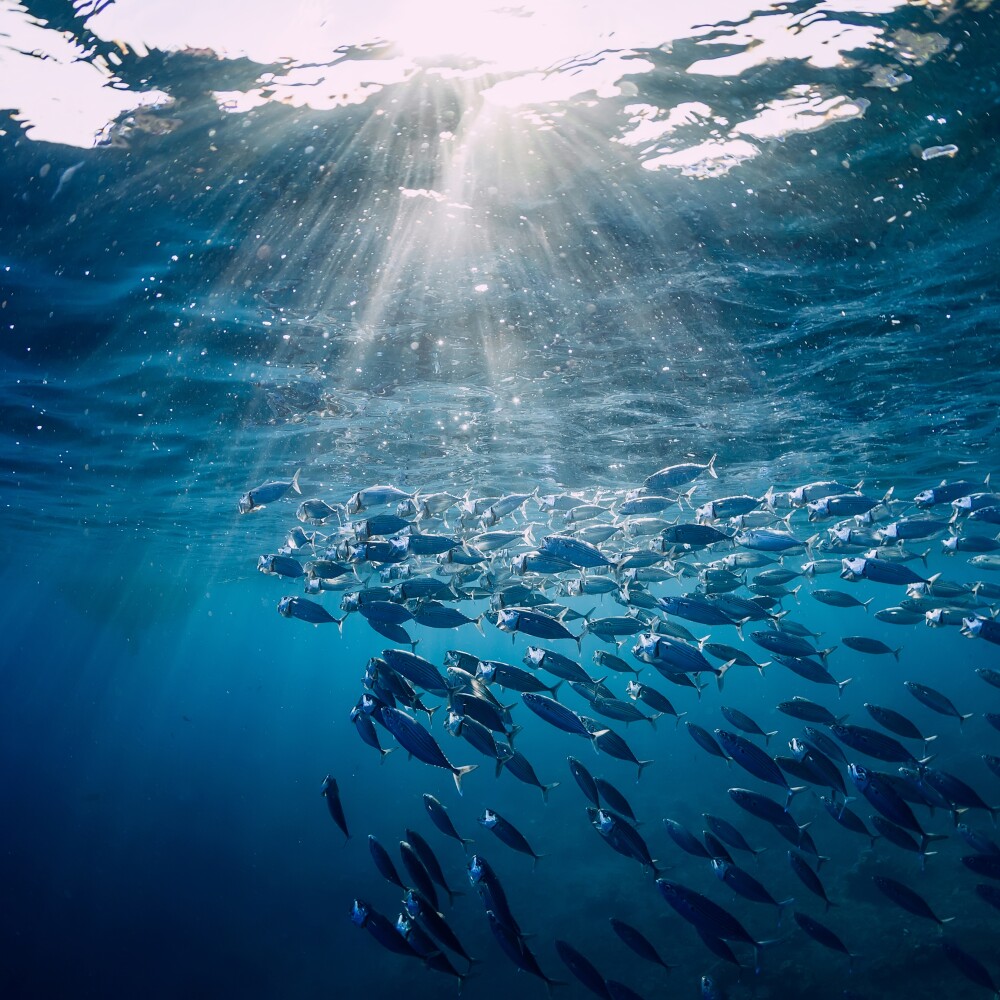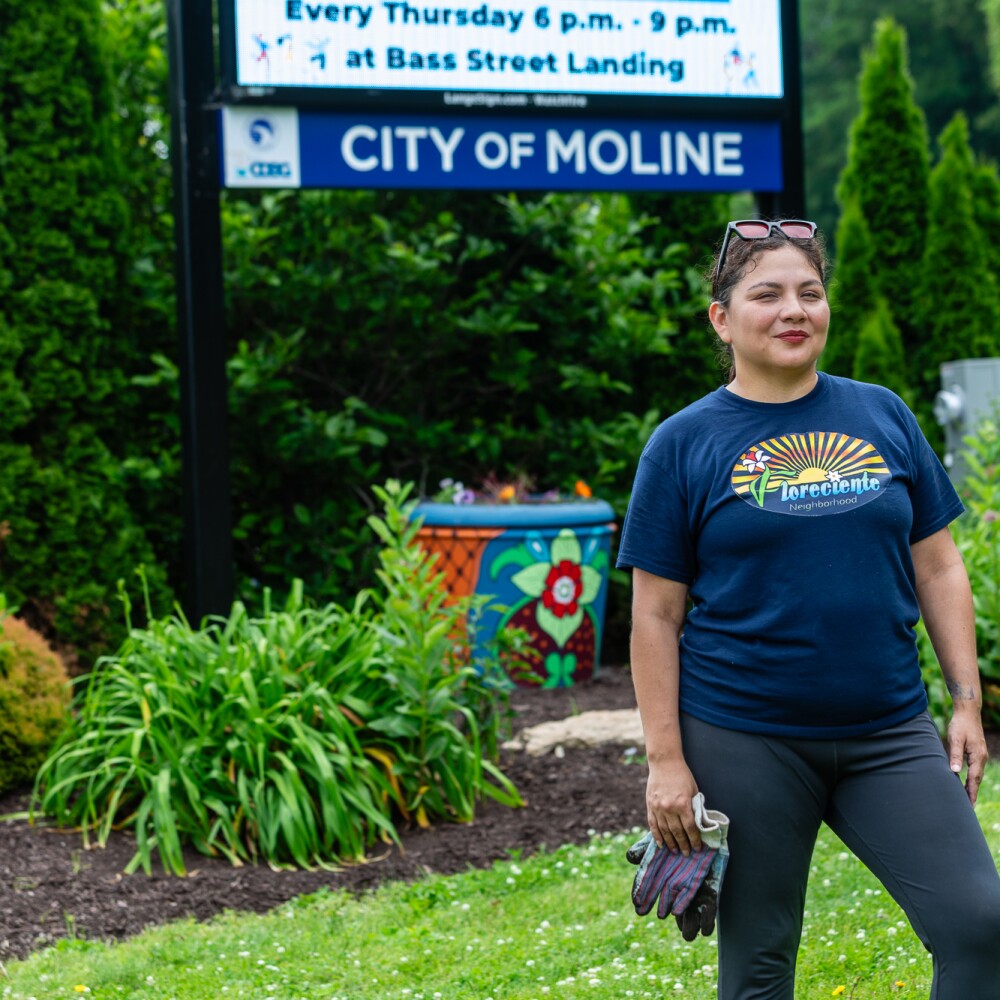They are the hidden figures of the environmental movement – Black conservationists, naturalists and scientists whose achievements have been overlooked and under-appreciated throughout history.
“In history books and popular culture, we learn about the legacies of people like John Muir, Aldo Leopold, Sir David Attenborough, Rachel Carson, Dr. Jane Goodall and Greta Thunberg. But there are so many People of Color who deserve recognition as well,” says Alyssa Johnson, an environmental educator with the National Audubon Society.
“For a number of reasons, including institutionalized oppression and prejudice, the talent and influence of many Black environmental heroes is largely unknown and unheralded.”
For the past two years during Black History Month, Alyssa has hosted lectures at the Montezuma Audubon Center to spotlight Black leaders whose work helped safeguard some of our most cherished spaces, protect species and advance knowledge of the natural world.
While raising awareness of those historical contributions, Audubon is also working to inspire a new generation of Black environmental leaders by establishing society chapters at Historically Black Colleges and Universities across the country.
As those future leaders emerge, they will build on the legacies of Black environmental pioneers who were – both literally and figuratively – trailblazers in their fields.
Colonel Charles Young – The First Black Superintendent of a National Park
Charles Young was born in 1864 in May’s Lick, Kentucky. His father escaped enslavement the following year and moved his family to Rivertown, Ohio. According to the National Park Service, Young excelled in “academics, foreign languages and in music” and graduated from an integrated high school in 1881 at the age of 17. After working a few years as a teacher, Young applied in 1883 to the U.S. Military Academy at West Point and earned acceptance a year later. At the time, he was only the ninth Black student to attend the prestigious academy. In 1889, he became just the third to graduate.
Throughout his time as a West Point cadet and in his first assignment to the Cavalry in Nebraska, Young endured “racial insults and social isolation” but excelled as a soldier. He rose to the rank of captain and fought with distinction in the Phillippine-American War.
In 1903, while leading an all-Black regiment in San Francisco, he was deployed to protect Sequoia and General Grant National Parks, then just 13 years old and still enveloped in wilderness.
Named acting superintendent, Young had an immediate and lasting impact on the young parks. He put his regiment of nearly 100 soldiers to work opening the first roads into the remote parks for public access.
According to Audubon Magazine, barely five miles of road had been built in the three summers prior to Young’s appointment as acting superintendent. During the summer of 1903, Young oversaw improvements on 18 miles.
“Before Charles Young arrived, the work was very slow moving. Charles Young outdid everything that had been done previously,” says Alyssa.
Young’s troops also built the first trail to the 14,500-foot summit of Mount Whitney, the highest peak in the 48 contiguous states, and he was influential in the expansion of both parks under his stewardship, reported Grist Magazine.
“Indeed, a journey through this park and the Sierra Forest Reserve to the Mount Whitney country will convince even the least thoughtful man of the needfulness of preserving these mountains just as they are, with their clothing of trees, shrubs, rocks, and vines, and of their importance to the valleys below as reservoirs for storage of water for agricultural and domestic purposes,” Young wrote, according to Audubon. “In this, lies the necessity of forest preservation.”
MaVynee Betsch – The Beach Lady
Born to a wealthy Jacksonville, Fla. family in 1935, Mavynee Betsch was a prominent patron of environmental causes throughout her life. She is credited for ensuring the protection of a prominent barrier island beach of historic cultural importance to Florida’s Black community.
Betsch was the great granddaughter of Abraham Lincoln Lewis, Florida’s first Black millionaire. Lewis purchased more than 200 acres of beachfront on Amelia Island in the early 20th century. American Beach, as it was called, emerged as a vacation destination for African Americans – including Joe Louis, Ray Charles, Zora Neale Hurston and other prominent Black celebrities – who were turned away from segregated beaches.
The community thrived until the 1960s following passage of the Civil Rights Act, when desegregation opened new vacation destinations to Black Americans.
Enter MaVynee Betsch, who grew up amid the beach’s sand dunes and cresting waves, but had moved away to pursue a career as an opera singer in Europe. When American Beach fell into decline, Mavynee Betsch returned to become its steward and savior – devoting herself to the island and other environmental causes.
Six feet tall, with long dreadlocked hair, and favoring brightly colored clothing and jewelry made from sea shells and beach stones, Betsch became known as the Beach Lady because of her near-constant presence and devotion to the location. Her passion for the beach led her not only to forego the comforts of her family’s home to sleep on the beach, but to save its dunes from development.
She helped restore the community by planting trees along its streets and spent a large part of her wealth campaigning for the beach’s preservation after more than 100 acres were sold to private developers in the 1990s. She donated the rest of her money to dozens of national and local conservation organizations over the course of 40 years of activism.
Speaking of her passion for American Beach, she told Sierra Magazine "it's history and nature all wrapped together, baby."
Betsch’s proudest achievement was the preservation of the 8.5-acre NaNa Dune, part of the tallest dune system in Florida. The developer who had purchased the property donated the parcel of land the National Park Service following Betsch’s extensive campaigning.
“Some may have thought her odd, even eccentric, but no one underestimated her dedication to preserving American Beach,” Grist magazine reported in a profile of Betsch.
Solomon Brown – The Smithsonian’s First Black Employee
Born in 1829 and raised in Anacostia, a historically Black neighborhood in Washington, D.C., Solomon Brown was one of six children whose father passed away when he was four. In 1952, he was hired as a laborer at the Smithsonian, established less than a decade earlier, and grew close the institution’s then-assistant secretary, Spencer Fullerton Baird.
“While working for Baird, he educated himself in the field of natural history. He illustrated maps and specimens for many of Baird's lectures, as well as his own talks on topics such as ‘The Social Habits of Insects,’ and delivered them to church organizations and civic groups,” according to the Smithsonian Institution archives. “Not only did he excel as a naturalist, but he was an illustrator, lecturer, philosopher, and poet.”
During more than 50 years in service at the Smithsonian, Brown became of the institution’s most trusted and revered figures, rising from laborer to clerical jobs to a position as a naturalist. He lectured on topics ranging from “water, air, food, coal, mineralogy, fungi, plant embryos, and geology,” reports Encyclopedia.com.
Dr. Jessie Price – Duck Researcher and Veterinary Microbiologist
A graduate of Cornell University, Dr. Jessie Price is considered one of the most influential avian microbiologists, credited with developing and testing vaccines to protect ducks from disease. During her career at the Cornell Duck Research Laboratory and other prestigious institutions beginning in the 1950s, Price specialized in identifying diseases in Pekin ducklings, which suffered from high mortality rates. She discovered they were dying en masse of E. Coli and Duck Hepatitis and a respiratory disease called Pasteurella Anatipestifer.
Price was responsible for “effectively saving the local environment from a disease that could potentially wipe out a major amount of the avian species,” according to the website POC Squared.
Her vaccines, including one to prevent avian cholera, have been used throughout the United States and Canada and her research has been used to improve the survival of Canada geese.
John Edmonstone – The Man Who Taught Darwin Taxidermy
Born enslaved in the South American country of Guyana, John Edmonstone learned to preserve bird skins from a naturalist named Charles Waterton. John became a free man when his enslaver returned to Scotland. In Edinburgh, John worked at the university’s zoology museum and gave lessons in taxidermy to private citizens. It was there he met and taught taxidermy to a teenaged Charles Darwin, who was then just beginning to explore his interest in the natural world.
The skills that Edmonstone taught Darwin played a critical role in the success of the English naturalist’s famed voyage around the world from 1831-1836, which included a visit to the Galapagos Islands that inspired his thinking on evolution.
“Darwin collected almost 500 bird skins specimens, and he learned it all from John Edmondstone,” says Alyssa.
According to the Natural History Museum in London, the most scientifically evocative species collected by Darwin were of the Galapagos mockingbirds.
“It was the Galapagos mockingbird that helped precipitate Darwin's opinions and thoughts on evolution,” says Alyssa. “I believe we would not have the understanding of evolution that we have today, if it wasn't for John Edmondstone. But his is not the name that we know.”


